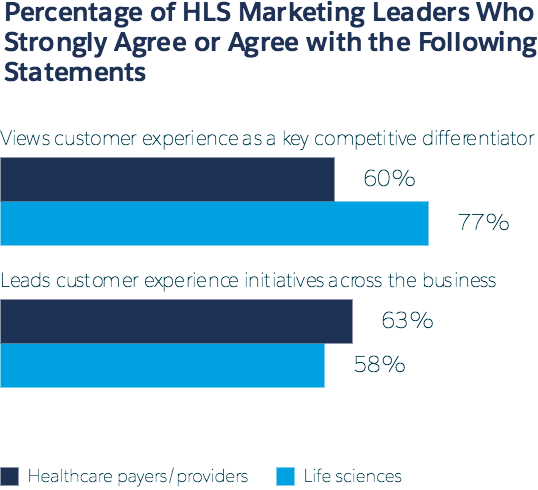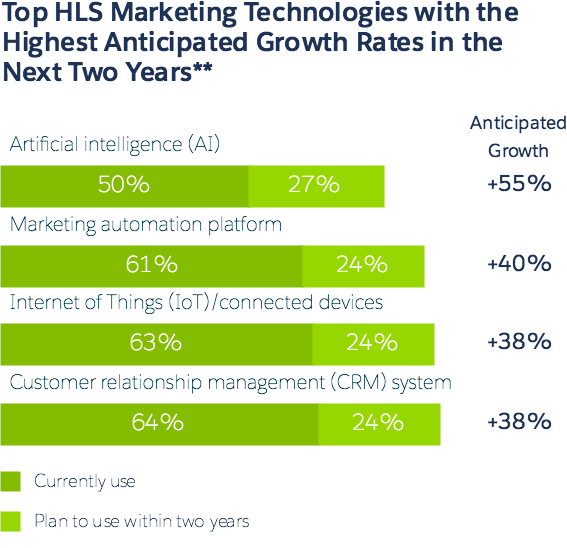
Get your FREE 30-day trial.
Please complete all fields.
It’s a tumultuous time for the health and life sciences (HLS) industry — one in which little is certain amidst a changing political, social, and economic atmosphere. But what is certain is that everyone (from patients to providers) is navigating an engagement dynamic that is a substantial shift from the status quo to value-based care. This movement forces marketers to refocus their efforts toward more personalized, timely experiences that build loyalty and advocacy among their customers — whether patients, members, employers, physicians, or others. Can HLS marketers break through traditional customer care models to adapt?
Salesforce’s new research report, “Marketing Trends across Healthcare and Life Sciences” reveals what more than 150 HLS marketing leaders have to say about their ability to meet these demands. The report also explores how HLS marketers are shifting their strategies and implementing intelligent tech to help them deliver.
Here’s a quick overview of key findings from the health and life sciences marketing research:
Whether it’s a patient seeking answers online prior to an appointment or a provider seeking reimbursement information from a payer, customers now expect a seamless, connected journey across touchpoints. In response, HLS marketers have become increasingly dedicated to fostering experiences that turn leads into loyal customers. Out of the many key performance indicators (KPIs) that HLS marketers track, customer satisfaction scores now rank as one of the most important, second only to sales qualified lead (SQL)-to-quote ratio. Overall, 64% of HLS marketing leaders view customer experience as a key competitive differentiator.

HLS marketers say that leveraging data from different sources is among their top three challenges in creating a connected customer experience. For example, a whopping 75% of HLS marketing leaders admit that they either broadcast identical messages across email and other channels or that they don’t coordinate between email and other channels at all. This is risky, given the detrimental impact a disconnected customer journey can have on customer loyalty.
The need to marry data sources is getting even bigger, especially given the role of Internet of Things (IoT)/connected devices (think health-based wearable tech) in HLS marketing and customer engagement. It makes sense, then, that HLS marketers would turn to IoT/connected devices and artificial intelligence (AI) as two of their top marketing technologies with the highest anticipated growth rates over the next two years. Excited at the prospect of advances like robotic surgery and virtual/augmented reality experiences, HLS marketers expect AI usage to rise by a massive 55% in the next two years. While these innovations will likely bring increased buzz and a new level of patient care, marketers see opportunities to improve customer experiences. Fifty-six percent of HLS marketers say AI is absolutely or very essential to helping their company create 1-to-1 marketing across every touchpoint.

The report also explores other marketing trends in the HLS industry, including:
How organizational structures are evolving to accommodate customer journey strategies
Why omni-channel marketing in the HLS sector is being turned upside down in a mobile-first era
Which channels marketers are investing in with the help of growing budgets
For a more in-depth look at marketing trends across the health and life sciences industry, download the full report. To see complete data across industries, check out the full “State of Marketing” report.